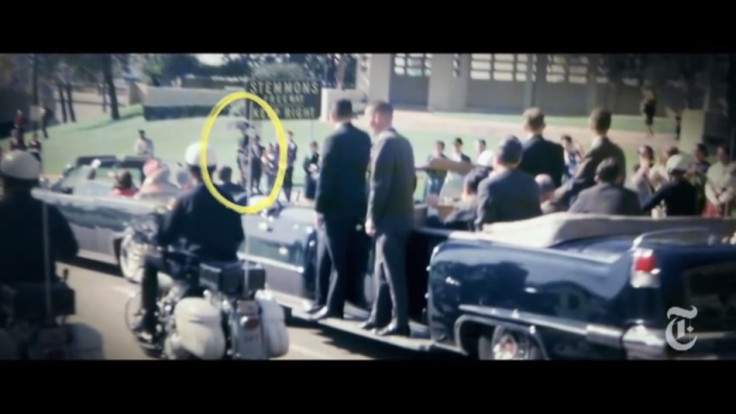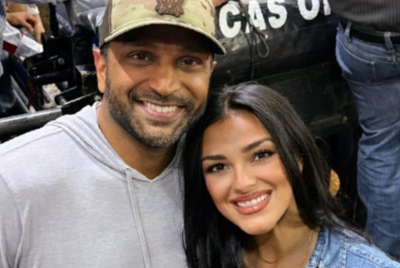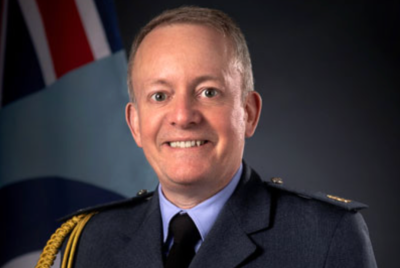JFK 50 Years on: Mystery of the 'Umbrella Man' [VIDEO]

What was a man standing with an open black umbrella doing in Dallas less than 100 feet away from John F Kennedy's passing motorcade on that sunny, 68-degree day of November 1963?
Just moments later the president had been shot in the head and throat.
The "Umbrella Man", as he was nicknamed, has triggered some of the weirdest speculations about that fateful day. Many conspiracy theorists believe the man is in fact Kennedy's real assassin, the one that shot Kennedy in the throat or immobilised him with a dart or flechette fired from the tip of his umbrella.
The Umbrella Man can be seen in certain frames of the Zapruder Film - the 26-second colour home movie shot from the Grassy Knoll by a local tailor, Abraham Zapruder - as well as in other stills photographs.
The New York Times has republished a video called "The Umbrella Man", directed by Errol Morris and narrated by private investigator Josiah Thompson, the author of the book, Six Seconds in Dallas.
The explanation has nothing to do with conspiracy theories, but it is also something no-one could have ever thought of.
The 1978 House select committee on assassination called on the Umbrella Man to come forward - and he did. Louie Steven Witt went to Washington with his umbrella and he opened it before the commission. Lastly, he explained why he opened his umbrella and was standing there, feet away from the president.
"The open umbrella was a kind of protest, a visual protest," says Thompson. "It wasn't a protest on any of John Kennedy's policies as president. It was a protest at the appeasement policies of Joseph P. Kennedy, John Kennedy's father when he was ambassador at the court of St James [UK] in 1938-39."
The reference is to then-British prime minister Neville Chamberlain's trademark fashion accessory: the black umbrella. Joseph P. Kennedy was an admirer of Chamberlain, who was known for his appeasement towards rising Nazism and Adolf Hitler.
Waving a black umbrella was a way to protest against the Kennedy family appeasing Hitler before World War II. Several cartoons were used in the 1930s to represent such appeasement - and in those, Chamberlain was always carrying an umbrella.
John F Kennedy wrote a thesis on appeasement while at Harvard entitled Why England Slept. Witt was sure that Kennedy would recognise that symbolism.
"In a coffee break conversation someone had mentioned that the umbrella was a sore spot with the Kennedy family," Witt told the committee. "Being a conservative-type fellow, I sort of placed him in the liberal camp and I was just going to kind of do a little heckling."
"What it means is: If you have any fact which you think is really sinister, is really obviously a fact that can only point to some sinister underpinning, forget it man" said Thompson. "Because you can never, on your own, think up all the non-sinister, perfectly valid explanations of that fact. A cautionary tale."
© Copyright IBTimes 2025. All rights reserved.




















